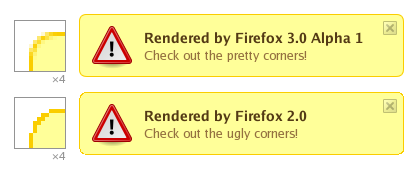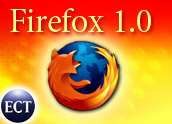With the release of Firefox 3 last month, the Mozilla project, corporation, community, and the open-source software world in general have a great achievement on their collective hands.
My involvement with Mozilla began with a weblog post in October of 2003, over a year before the initial release of Firefox. During the year that led up to the release of Firefox 1.0, we assembled a team that created the branding and visual identity for Firefox (and later, Thunderbird).
As the launch of Firefox 1.0 approached, our involvement in the project grew from visual identity to include a redesign of the Mozilla.org in the summer of 2004 by our company, silverorange. This also meant a change in the nature of our involvement to include professional services. We were now making some money!
Though my involvement in Firefox was a only thin layer on top of the years of engineering, design, and development that truly built the product and organization, I’ve occasionally had some unique opportunities. On November 9th, 2004 at 4:51AM Atlantic time, I had the privilege of making the CVS-commit to the mozilla.org website that officially released Firefox 1.0.
With the release of Firefox 1.5 in November of 2005, we launched a the new Mozilla.com website (having separated the Firefox and Thunderbird products out from the larger Mozilla.org website). The release of Firefox 2, brought with it the first redesign of Mozilla.com where the visual style was provided by another design firm (NoBox) and our role was one of implementation.
With the release of Firefox 3, Mozilla.com received a major design, again with the visual style coming from another firm (The Royal Order of Experience Design from Chicago). The style of this new site is unlike anything we could have created ourselves and it made the implementation both challenging and fun.
The involvement that I and my co-workers had with Firefox and Mozilla has paralleled and contributed to the growth and success of our business. Our work with Firefox and Mozilla changed the world in which our company operated and provided a new set of extraordinary opportunities. When a guy named Kevin Rose called and asked us to help with the design of his new site, Digg, the first thing he said was that he had seen our work with Mozilla.
As the organization behind Firefox grew, and the scale and amounts of money floating around grew, I was skeptical of the long-term prospects of the project and of the product. Once Mozilla was big enough, I thought, they’d have the same problems any large software company has.
Firefox 3 has proven me wrong. I really expected Firefox to get bigger, dumber, slower, as the small founding team of developers was eclipsed by a larger team. Instead Mozilla has shown that they are not “any large software company”. Like Linux, Apache, and other great free-software projects before them, they have shown how an open-source project can defy the traditional rules of software project management. The product has gotten smaller, smarter, and faster. The organization continues to look at issues that matter for an open web.
It’s been fun. So, when does Firefox 4 come out?










